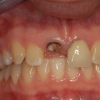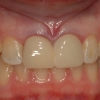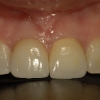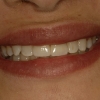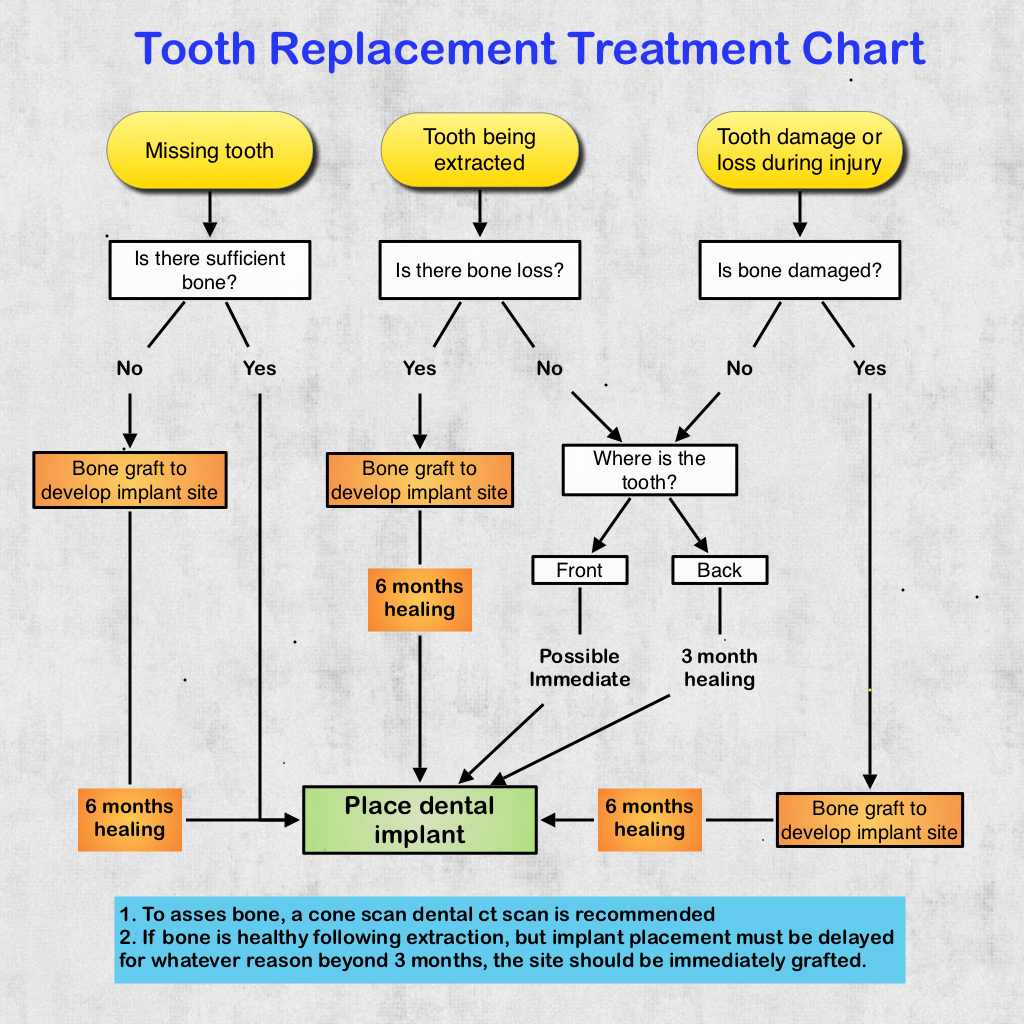
5 Key Principles for Success
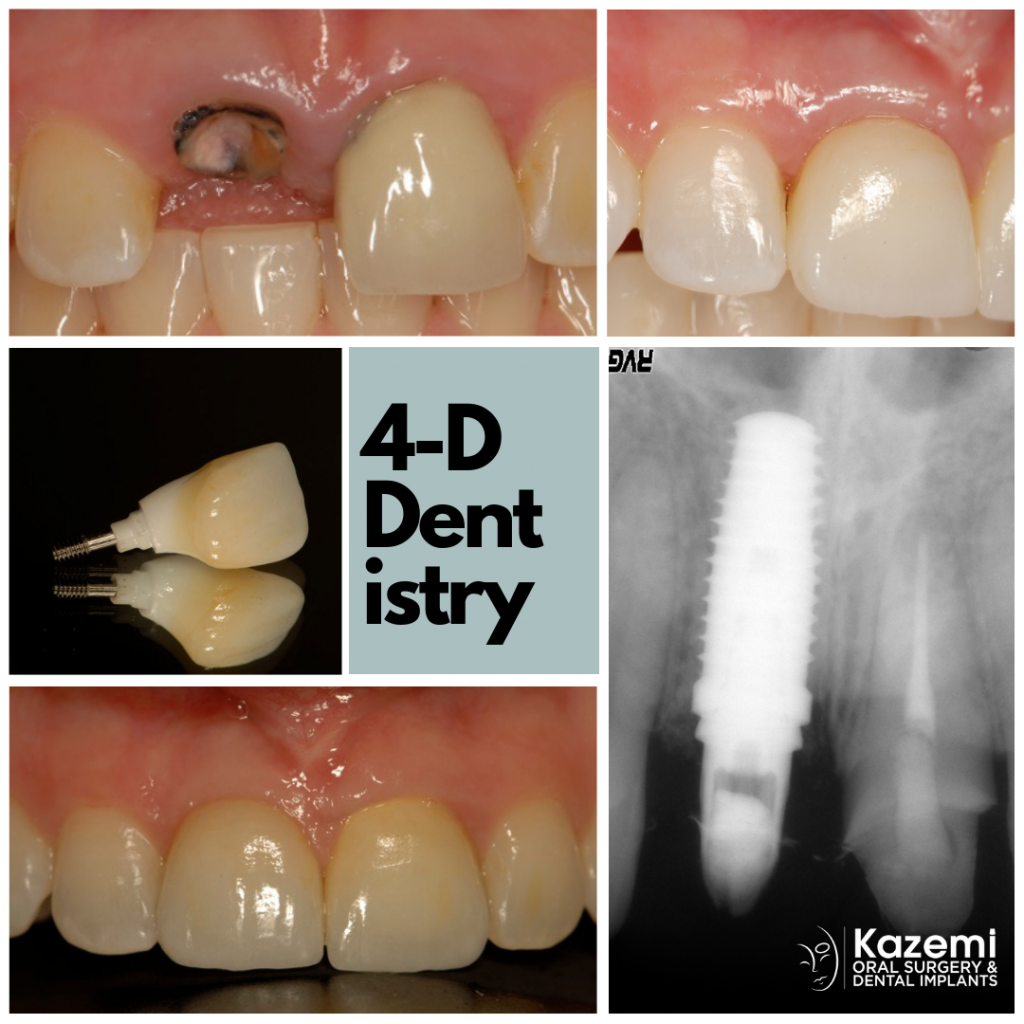 Here are the 5 key principles every patient should know about how to achieve great results with dental implants in the smile zone.
Here are the 5 key principles every patient should know about how to achieve great results with dental implants in the smile zone.
- Careful and detailed planning: the surgeon and the restorative dentist must fully evaluate the implant site and restorative needs and collaborate on a detailed treatment plan. The bite, aesthetic requirements, smile line, and patient desires must all be considered. “Fail to plan, plan to fail.”
- Preserve the foundation: The underlying bone and gum tissue must be preserved or augmented in order to support teeth that look and feel natural. This begins with grafting the site after a tooth is extracted.
- Precise positioning of the implant by surgeon: Once the foundation (underlying bone and gum tissue) has been developed, the implant is placed. Proper positioning and emergence of the implant is crucial in achieving an even gum tissue line and teeth that look natural. The surgeon must use special splints that guide him in proper positioning of the implants.
- Shaping the gum tissue: Following placement of the implant, a properly fabricated temporary crown must be placed for at least three months. This allows the doctors to design and shape the gum tissue exactly the way it should be: aligned, even, and with normal texture and color. This is especially important in those with high smile lines.
- Final crown: The final restoration must follow the same contour and shape as the final temporary restoration. The final crown may be made of all ceramic material or ceramic bonded to underlying metal. This is an important choice that the restorative dentist must make.
Patient Example #1:
Dental Implants in the Smile Zone- Part 2 from H. Ryan Kazemi, DMD on Vimeo.
Patient Example #2:
Dental Implants in the Smile Zone- Part 3 from H. Ryan Kazemi, DMD on Vimeo.
Upper Central Incisors
Central incisors (Teeth #8 and 9) are directly in the center of the smile zone. The following considerations are important when replacing with a dental implant:
- Atraumatic tooth extraction approach using non-invasive techniques
- Preservation of bone and soft tissue with minimal disruption
- Precise placement of dental implant using 3-D planning and guided surgery
- A customized implant-supported provisional (temporary) restoration
- A customized implant-supported crown and choice of the right materials for the desired aesthetic results
Portfolio Example:
Upper Lateral Incisors
Upper lateral incisors (Teeth #7 and 10) are critical in the smile zone and contribute greatly to the final aesthetic outcome. The following considerations are important when replacing a lateral incisor with a dental implant:
- Atraumatic tooth extraction approach using non-invasive techniques
- Preservation of bone and soft tissue with minimal disruption
- If congenitally missing, the orthodontist must assure minimal 6 mm distance between the central incisor and the canine
- Precise placement of dental implant using 3-D planning and guided surgery
- A customized implant-supported provisional (temporary) restoration
- A customized implant-supported crown and choice of the right materials for the desired aesthetic results
- Selection of narrow implants due to smaller available space.
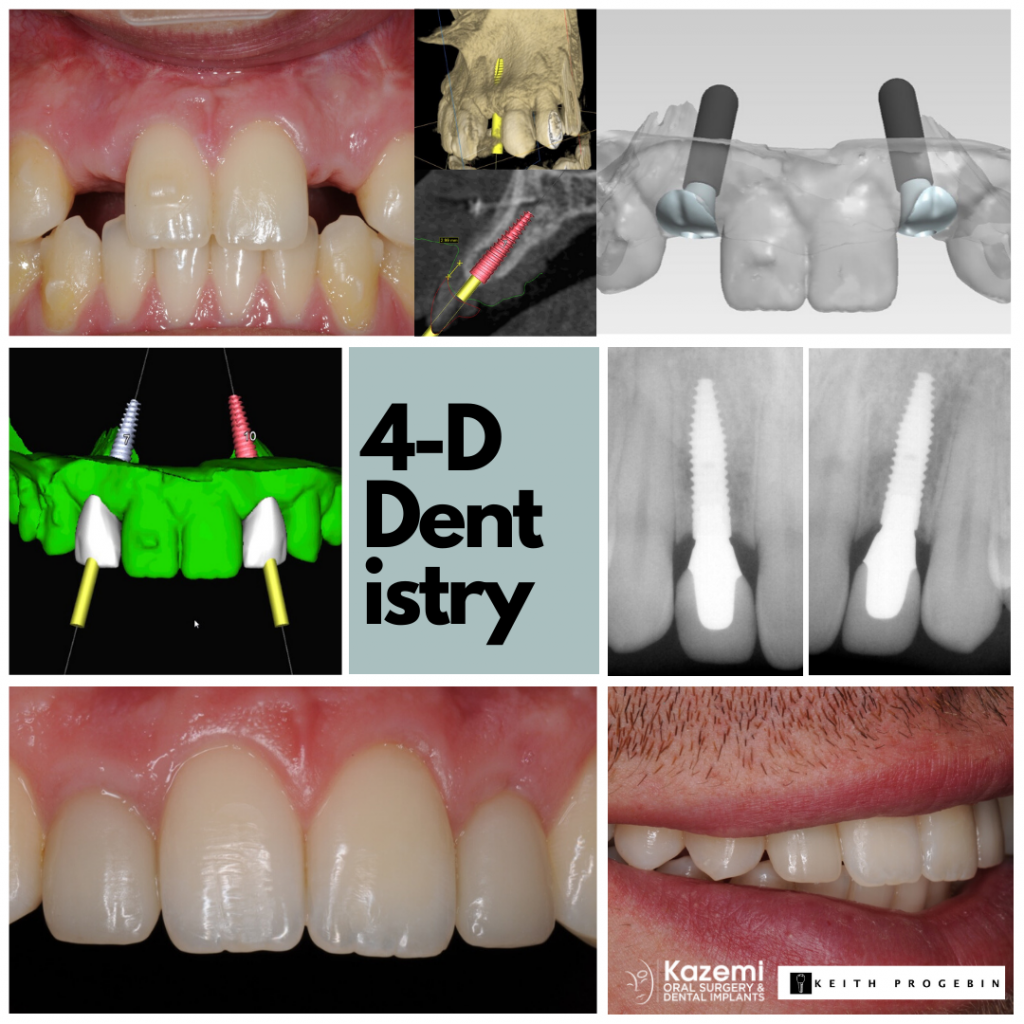
Lower Incisors / Canines
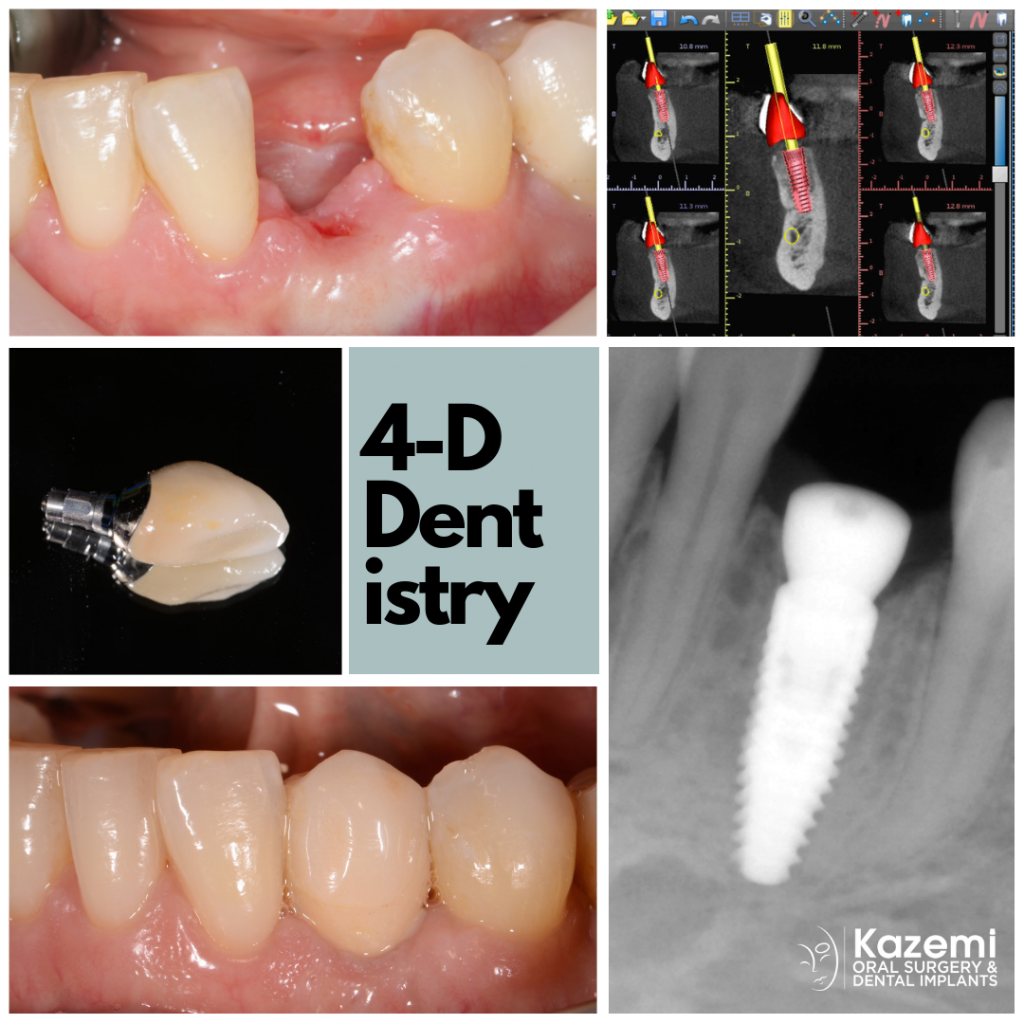 Lower anterior teeth (Teeth #22 to #27) consist of 4 incisors and 2 canines. These teeth are not directly in the smile zone however can be seen if the lower lip position is lower or with certain smile types. The following considerations are important when replacing lower incisors with dental implants:
Lower anterior teeth (Teeth #22 to #27) consist of 4 incisors and 2 canines. These teeth are not directly in the smile zone however can be seen if the lower lip position is lower or with certain smile types. The following considerations are important when replacing lower incisors with dental implants:
- Atraumatic tooth extraction approach using non-invasive techniques
- Preservation of bone and soft tissue with minimal disruption
- Consider immediate implant if possible
- Precise placement of dental implant using 3-D planning and guided surgery
- A customized implant-supported provisional (temporary) restoration
- A customized implant-supported crown and choice of the right materials for the desired aesthetic results
- Selection of narrow implants due to smaller available space
Number of Dental Implants
If you have multiple missing adjacent teeth in the upper or lower front area of your mouth, implants should be positioned with spaces in between. This means that implants should not be placed next to each other for every tooth missing. Examples:
- Missing lateral incisor and central incisor: One implant is positioned in the central incisor and two-unit splinted crowns are placed replacing both teeth.
- Missing canine and lateral incisor: One implant is positioned in the canine site and two-unit splinted crowns are placed replacing both teeth.
- Four missing incisors (central and lateral incisors): Two implants are positioned in the lateral incisor positions and a four-unit bridge is placed replacing all four teeth.
- Missing canine, lateral incisor, and central incisor: Two implants are positioned in the canine and central incisor positions and a three-unit bridge is placed replacing all three teeth.
- Six missing teeth, from canine to canine: Total of four implants are placed. Two implants in the position of canine and central incisor on one side and similar placement on the other. Then two 3-unit bridges are placed separate in the middle (between the central incisors).
- One exception- Missing central incisors: Place one implant per tooth with single crowns.
Treatment Process
Video: Dental implant treatment process:
Common Implant Staging Approach:
- Immediate implant placement: Extraction and placement of the dental implant on same day
- Early implant placement: Extraction of the tooth and placement of dental implant in two to three months after healing.
- Delayed implant placement: Extraction and bone grafting of the site, followed by placement of the dental implant in five to six months.
- Dental implant healing: Placement of dental implant followed by two to four months of healing (depending on several factors).
- Dental implant restoration: Restorative phase to place appropriate crown, bridge, or overdenture supported by implants.
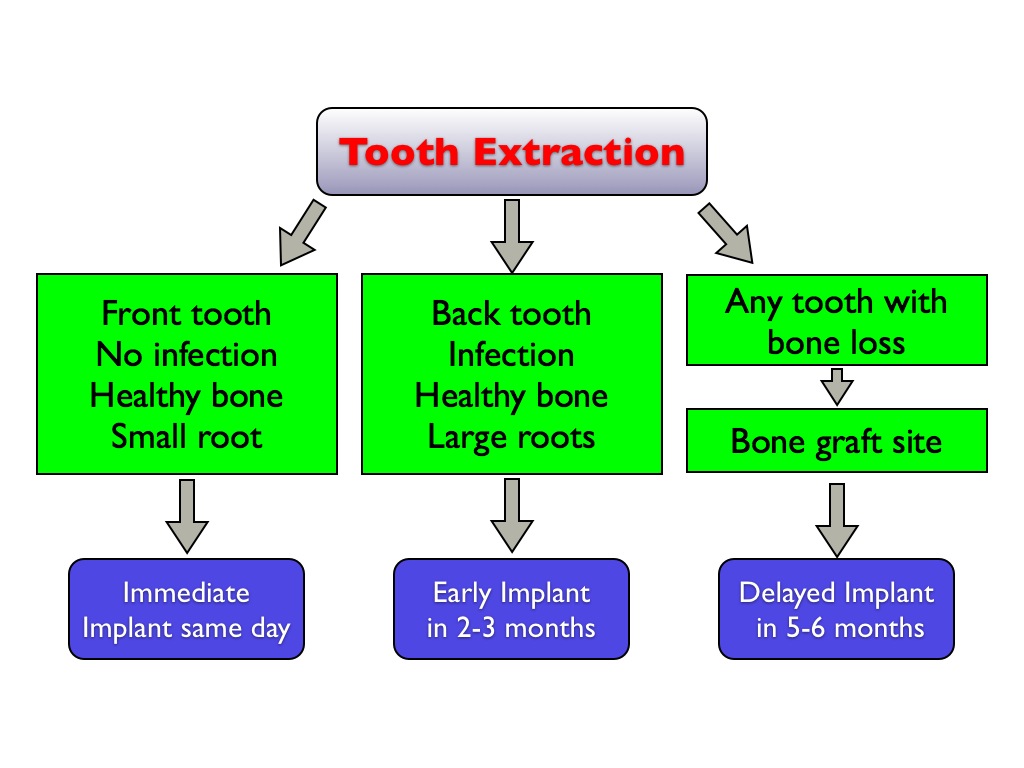
Immediate Implants (Same-Day-Implants):
Immediate Restorations:
Factors That Influence Staging:
- Location of the implant (smile zone or in the back)
- Bone amount and quality
- Placement as immediate or delayed
- One-stage (implant with temporary extension placed at same time) or two-stage approach (implant is covered with gum tissue and uncovered once healed)
- Aesthetic reasons
Treatment Time:
Length of the overall treatment can vary based on the following factors:
- Location of the implant
- Aesthetic requirements
- Type of bone and gum tissues
- Bone grafting needs
- Possible temporization of the implants
- Patient’s physiology and healing potential
Teeth replacement in non-aesthetic zones with good bone anatomy can be completed in as short as three months from implant placement to the final crown.
Portfolio
Want to see more examples of our dental implant therapy in the smile zone?
